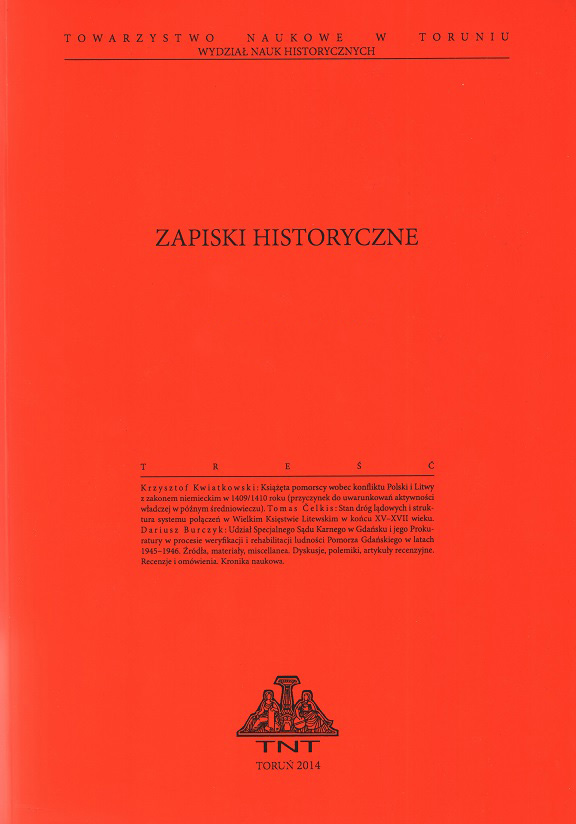„Akt sławny, wielki i nigdy w Polszcze niewidziany…”
„Akt sławny, wielki i nigdy w Polszcze niewidziany…”
The Warsaw Triumph of Stanisław Żółkiewski (1611) against the Background of the Ceremony of 1583
Author(s): Justyna GałuszkaSubject(s): Cultural history, Military history, Political history, 16th Century, 17th Century, Source Material
Published by: Towarzystwo Naukowe w Toruniu
Keywords: ceremonial; military triumph; propaganda; general parliament; Wasyl Szujski; Polish-Muscovite war; Kłuszyno
Summary/Abstract: The article discusses the military triumph of the Crown Field Hetman Stanisław Żółkiewski, which took place in November 1611 in Warsaw during the General Sejm, as against a similar ceremony in 1583. Both of those events crowned the war struggle with the Muscovite state and were closely associated with the Polish-Lithuanian triumphs over the eastern neighbour. In both cases, those spectacles constituted the crowning achievement of long-standing fights. Triumphs were organized in Cracow and Warsaw, and its spectators were the country’s political elites gathered at the wedding of Jan Zamoyski with Gryzelda Batory (1583) and participants of the Sejm. One can also indicate a wider audience, which was the noble society, because the propaganda activities undertaken by Stefan Batory and Sigismund III Vasa were to bring not only desired short-term results, e.g. introducing taxes for the continuation of the war with Muscovy, but also long-term effects by shaping political attitudes desired in a given moment. In both cases, the originators of the triumphal marches could obtain information from one of the chapters of Hetman’s Books of Stanisław Sarnicki. The author collected there the most important comments related to the organization of such marches. Żółkiewski’s triumph was closely related to the capture of the Smolensk fortress and the defeat of the Muscovite army near Kłuszyn in 1610. Those events gave rise to the organization of another triumph, but this time not of the king himself, but of the hetman. It was to be used primarily as an argument for the nobility sitting in parliament to pass the taxes necessary for further warfare. The analysis and comparison of both celebrations show that much greater effort was put into organizing the Cracow events of 1583. Their artistic and ideological setting was given great attention to detail. Twenty-eight years later, participants and observers of the Warsaw triumph did not experience similar impressions. Neither the king nor his entourage took care of preparing the scenario of the ceremony, music or elements of occasional architecture, etc. Many people took part in the Cracow events: dancers, musicians, actors, soldiers and exotic animals. In 1611, the triumph in Warsaw was extremely simple. Not much attention was paid to the preparations. The course of events shows the animosities between Sigismund III and Stanisław Żółkiewski along with the lack of a unified position towards the Muscovite state. The article was supplemented with a critical source edition of one of the descriptions of the events of 1611. The text is stored in a collection of manuscript documents – the so called “miscellanea” in the Czartoryski Library in Cracow. The author of this account is unknown, although he probably witnessed the Warsaw triumph, which is indicated, for example, by detailed descriptions of the appearance of Muscovite prisoners of war.
Journal: Zapiski Historyczne
- Issue Year: 84/2019
- Issue No: 2
- Page Range: 171-203
- Page Count: 33
- Language: Polish

